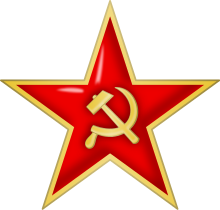
The 8th Guards Order of Lenin Combined Arms Army is an army of the Russian Ground Forces, headquartered in Novocherkassk, Rostov Oblast, within Russia′s Southern Military District, that was reinstated in 2017 as a successor to the 8th Guards Army of the Soviet Union's Red Army, which was formed during World War II and was disbanded in 1998 after being downsized into a corps.
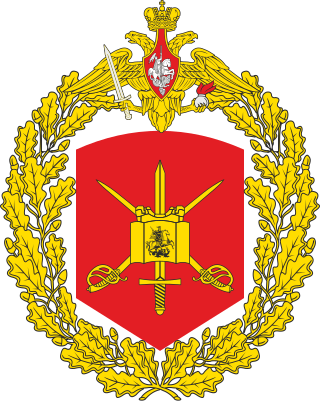
The 1st Guards Tank Army is a tank army of the Russian Ground Forces.
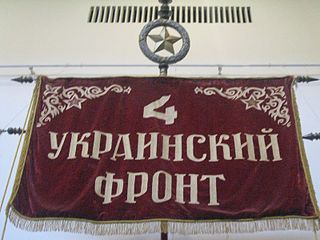
The 4th Ukrainian Front was the name of two distinct Red Army strategic army groups that fought on the Eastern Front in World War II.

The Ukrainian Ground Forces, also known as the Ukrainian army, are the land forces of Ukraine and one of the five branches of the Armed Forces of Ukraine. They were formed from Ukrainian units of the Soviet Army after Ukrainian independence, and trace their ancestry to the 1917-22 army of the Ukrainian People's Republic.

The North Caucasus Military District was a military district of the Russian Armed Forces, which became in 2010 the Southern Military District and lately also included the Black Sea Fleet and Caspian Flotilla.

The Red BannerCarpathian Military District was a military district of the Soviet Armed Forces during the Cold War and subsequently of the Armed Forces of Ukraine during the early Post-Soviet period.

The 10th Guards Uralsko-Lvovskaya Volunteer Tank Division, also known as the Ural-Lvov Tank Division, is a tank division of the Russian Ground Forces and part of the Moscow Military District's 20th Guards Army. The division traces its heritage back to 1943, during World War II. It is headquartered and based at Boguchar, 160 kilometres south of Voronezh, Voronezh Oblast.
The 18th Army of the Soviet Union's Red Army was formed on 21 June 1941 on the basis of HQ Kharkov Military District and armies of the Kiev Special Military District.

The Central Group of Forces was a formation of the Soviet Armed Forces used to incorporate Soviet troops in Central Europe on two occasions: in Austria and Hungary from 1945 to 1955 and troops stationed in Czechoslovakia after the Prague Spring of 1968.

The 35th Combined Arms Red Banner Army is a field army of the Russian Ground Forces. The army was first formed in July 1941 with the Far Eastern Front. After spending most of World War II guarding the border in Primorsky Krai, the army fought in the Soviet invasion of Manchuria in August 1945, and was disbanded shortly after the end of the war. Reformed at Belogorsk when Sino-Soviet tensions rose in the late 1960s in the Far East, the army became part of the Eastern Military District in 2010.

The 2nd Guards Tank Army was a large military formation of the Red Army and later the Soviet Army, now part of the Russian Ground Forces of the Russian Federation.
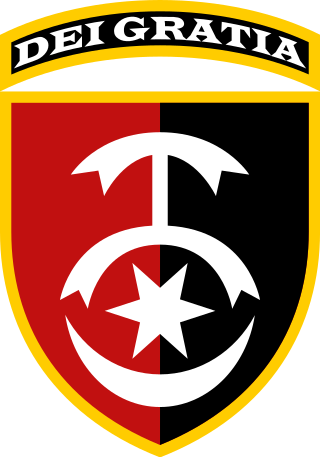
The 30th Prince Konstanty Ostrogski Mechanized Brigade is a formation of the Ukrainian Ground Forces. The full name of the unit is 30th Independent Mechanized Brigade "Konstanty Ostrogski".

The Soviet Airborne Forces or VDV was a separate troops branch of the Soviet Armed Forces. First formed before the Second World War, the force undertook two significant airborne operations and a number of smaller jumps during the war and for many years after 1945 was the largest airborne force in the world. The force was split after the dissolution of the Soviet Union, with the core becoming the Russian Airborne Forces, losing divisions to Belarus and Ukraine.
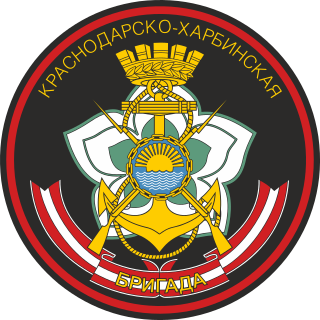
The 40th Independent Krasnodarsko-Kharbinsky Twice Red Banner Naval Infantry Brigade is a brigade of the Russian Naval Infantry. It is based in Petropavlovsk-Kamchatskiy in the Russian Far East and has the Military Unit Number (v/ch) 10103. It is part of the North-East Group of Troops and Forces, a joint command directed by the headquarters of the Navy's Kamchatka Flotilla.
The 7th Guards Cavalry Corps of the Soviet Union's Red Army was a cavalry corps active during the Second World War. It was formed from the 8th Cavalry Corps in February 1943.

The 11th Guards Mechanized Brigade is a unit of the Armed Forces of Belarus based in Slonim. The 11th Guards Brigade traces its history back to the 1942 formation of the 6th Tank Corps of the Soviet Army during World War II.
The 31st Guards Airborne Division was an airborne division of the Soviet airborne from 1948 to 1959. Originally part of the 39th Guards Airborne Corps, it was directly subordinated to Soviet airborne headquarters after the corps was disbanded in 1955. The division's only combat occurred in Operation Whirlwind, the suppression of the Hungarian Revolution of 1956.
The 17th Rifle Corps was a corps of the Red Army and later the Soviet Army, formed three times.
The 7th Guards Tank Division was a tank division of the Soviet Army during the Cold War.
